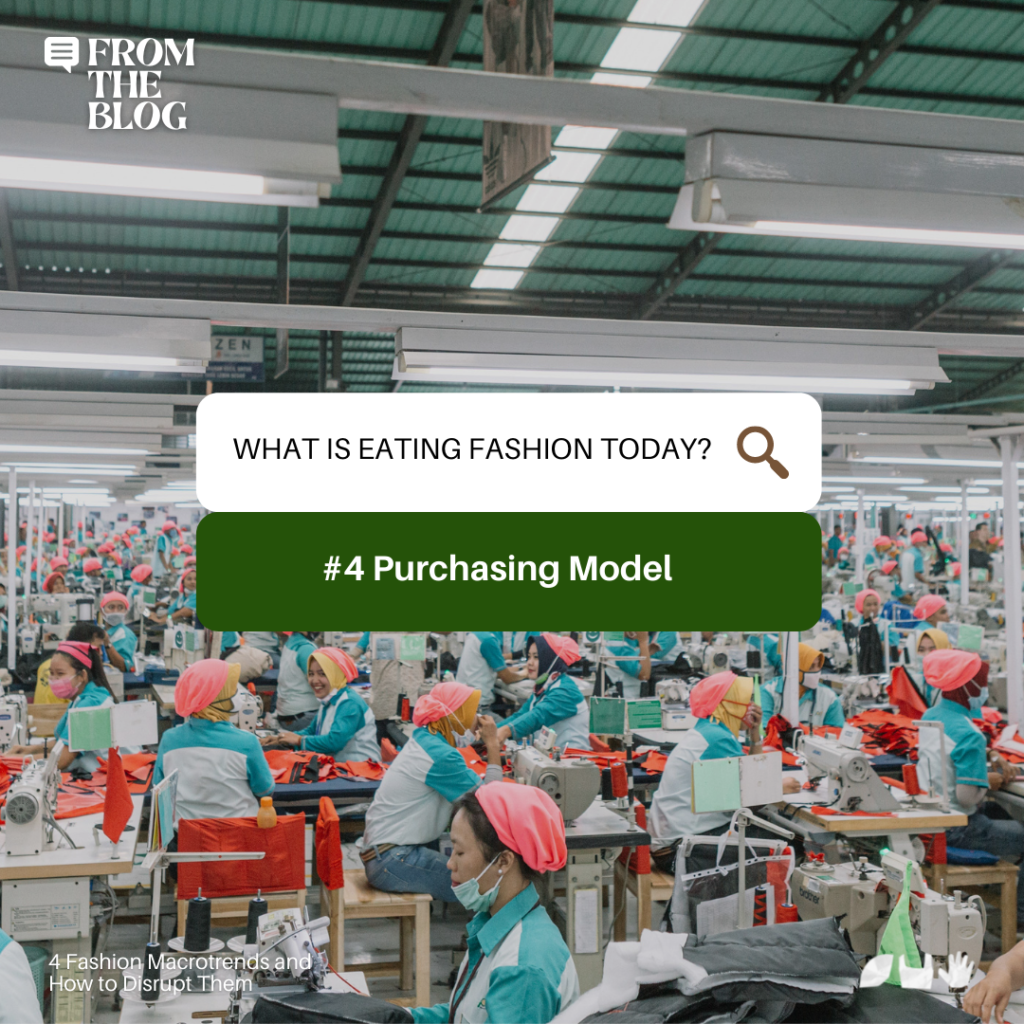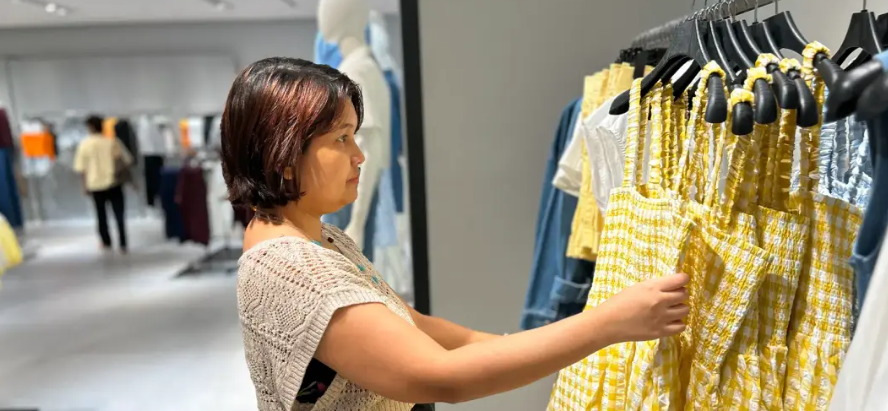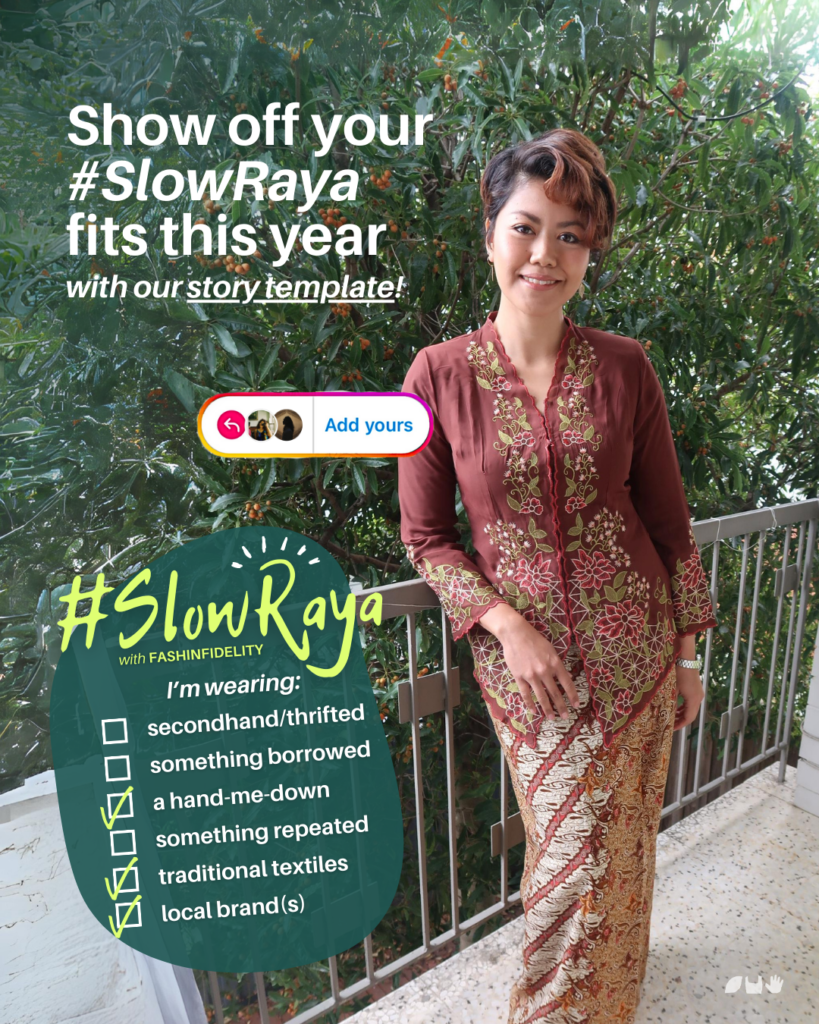Part 4 of 4
Thanks for sticking with us this far. Today’s post focuses on fashion’s purchasing model, that more than ever, is completely ripe for disruption.
This article is part of a series of deconstructing a massive global industry into areas for disruption on the road to #sustainability, by spotlighting 4 macrotrends in fashion’s supply chain that we can tackle, right now.
800 words; 4 min read.
Problem no. 4: Purchasing Model
When exploring the biggest threat facing brand sourcing executives today, security of supply and trade is big external factor that has been quoted as having an effect on a brand’s ability to function well.
There needs to be a complete reinventing of planning, negotiation and order placement in fashion. The current system of purchasing is unsustainable in today’s mode of supply and demand volatility.
Current challenges include:
- the need to weather cost increases
- overproduction – there is need to eliminate late orders and order revision frenzy
- lack of knowledge of sustainability at sourcing and at suppliers’ end makes trying to navigate this space harder
Often, in fashion companies, teams work in functional silos and this can be counter-intuitive in achieving visionary and practical goals.

We know there’s inequality in fashion’s supply chain in waste management. A better model of purchasing could really welcome in a new era of more sustainable way of production. Here are some ideas that are making noise in the industry, and should be followed through sooner, rather than later:
- There is a push to fashion to have fewer suppliers, not more. Even before the pandemic hit this has been talked about to achieve consistency and streamline planning and ordering. The consolidation of brands’ supplier base will make for better relationships and greater transparency.
- There’s benefits of operating in regional bubbles – where your production is localised to what’s available, regionally, and forces for innovation.
- Near-shoring opportunities is now more relevant than ever – bringing back suppliers, production facilities and materials back nearer, instead of much further away.
- With all of this, fashion brands (or manufacturers) can look at broad-scale supplier partnership programs to favour guaranteed demand supply.
This ability to be nimble and embrace change on a micro level on a continuous basis will determine survivability in the big picture of fashion’s evolution.
In addition, some of the more ideas that seem a bit crazy to ‘traditionalists’ in fashion now, won’t seem so crazy in the future. So we should start looking at opportunities to realise this, now:
- Why don’t we look at purchasing of responsible materials at-scale?
- Can we look at sustainability as a dominant selection criterion for new suppliers?
- How about incentivising sustainability? For example, financial penalty for negative supplier performance on social and environmental responsibility, and vice versa
- This one is a request that’s quite popular among purchasing executives: There should be no price premium to produce sustainably.

If you’ve been to any of my talks or hear me speak on this topic, you’ll know I feel strongly about fashion lagging in innovation due to the fact they haven’t ‘opened’ their selves up to others ‘unlike’ them. One of the benefits of being a regulated industry is the fact that it is a forcing function to self-innovate. Fashion, not being regulated, has been slow in the uptake of sustainability and hence their ‘sustainability street cred’ is now just getting more traction. It’s definitely starting to change now. But how’s this as an idea: can fashion purposely look to employ cross-industry personnel, maybe more environmental engineers like me? 🙂
Technology and R&D, apart from being crucial to efficiencies in product design, can also help fashion bridge the old and the new way of functioning. The use of integrated AI (artificial intelligence) for example can realise improvements in demand-focused merchandise planning. The integration of customer insights along the supply chain in real time will enhance the planning and delivery of products, as well as continually eliminate and reduce wastage.
Fashion is known for busting at the seams with creativity, using insights to make beautiful and functional clothing, from a world full of imagination. What if put in the same amount of flair to making dreams happen in a transformative way, giving ourselves constraints to deliver a more sustainable industry? Can we challenge ourselves to make this possible?

In summary
What’s eating fashion today is really a reminder that these opportunities in fashion are so obvious and current in shaping the future landscape of the industry – these are key to the viability of so many players along the supply chain that the cost of inaction will surely be disastrous for many.
Those brands who act early to remodel the way they operate will pave the way to a successful customer base and social, economic and environmental impact whereas the ones who don’t will be left behind.
As Edwin Keh, CEO of the Hong Kong Research Institute of Textiles and Apparel has said, “There is no silver bullet; rather, there will be a combination of a lot of small innovations and a few radical changes.”
This ability to be nimble and embrace change on a micro level on a continuous basis will determine survivability in the big picture of fashion’s evolution.
And that’s it for May’s four-part series! I appreciate you being so attentive and if you did enjoy the read, please do share this onto your networks!
Missed out on last week’s post? Check out Part 3 of the series here.
Join us in our Slow Fashion movement with the hashtags #ConscientiousFashionista and #wardrobetruths on Instagram, and follow us at @fashinfidelity.
Tags: #sustainability #fashion #fashionsupplychain #supplychain #circularity #ethicalfashion #sustainablefashion #conscientiousfashionista #fastfashion #slowfashion #wardrobetruths #fashioneducation #fashion #fashinfidelity




